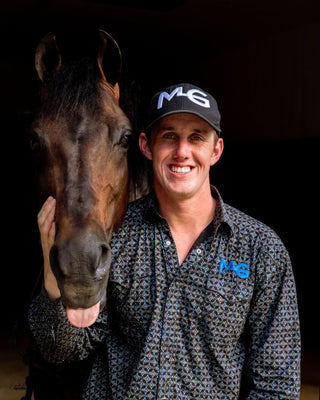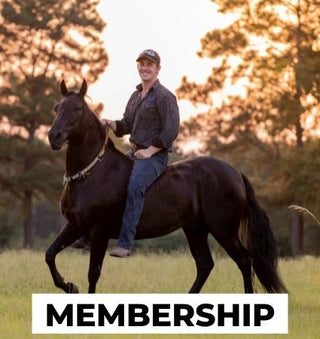Watch the Video Here or continue reading below!
Welcome back, Team G! In this edition of Michael Gascon’s clinic series, we’re coming to you from Graham, Washington, where Michael works with a 10-year-old Paso Fino struggling to gait. This gelding, while calm and quiet, exhibits a common issue—he trots, stumbles, and lacks forward energy. Michael dives into diagnosing and fixing this with groundwork, saddle work, and strategic corrections.
Understanding the Gaiting Spectrum
From Trotters to Pacers—Where Your Horse Fits
Michael begins by explaining that gaited horses fall on a spectrum between trot and pace. Trotty horses tend to be dull, quiet, and heavy on the forehand—just like the horse in this session. These horses often stumble because they're disengaged behind and lacking energy. Pacey horses, on the other hand, are nervous, tight, and high-headed.
“In the middle, you’ve got your gaited horse—balanced, engaged, and smooth.”
The first goal? Wake this horse up and get his body aligned to allow for gait.
Step One: Groundwork with Purpose
Creating Energy from the Ground
Michael starts by backing the horse up with increased speed and responsiveness. This builds the momentum and respect needed to drive forward under saddle.
“The faster and easier I can get them backing up, the more energy I’ll be able to get going forward.”
Circles are next, but unlike the typical calming exercises, this time Michael asks for the horse’s head to stay up, creating awareness and engagement through the shoulders and hindquarters.
The Key to Gait: Head Position and Engagement
Why Lifting the Head Changes Everything
One of the simplest and most effective changes a rider can make is to lift the horse’s head.
“When the horse’s head is down, the butt sticks out—and that makes him trot. When we pick the head up, the butt tucks under, and the back feet land first. That’s gait.”
Using this mechanical change, Michael sets the horse up to start gating by adjusting posture and asking for energy simultaneously.
Tack and Timing: Saddle Up with Intention
Making Saddle Time Count from the First Step
Once mounted, Michael reinforces the earlier lessons. He checks the brakes by stopping the horse with fully extended arms to teach the horse to stop using his hindquarters.
“Stopping with the hindquarters means starting with the hindquarters—and gaiting is the back feet landing first.”
With energy applied under saddle, the horse initially reacts by humping up—a common sign of confusion when sleepy horses are asked to move forward with purpose. Michael patiently redirects the energy forward, keeping the head elevated and reinforcing engagement.
Breaking Through: From Lazy to Gaited
Waking Up the Sleeping Beauty
After a few corrections—redirecting energy, side-passing out of resistance, and holding the correct frame—the breakthrough happens. The horse begins to gait smoothly, with his back feet landing first and his head in a self-maintained, elevated position.
“You can have the best of both worlds—a super quiet horse and a super gaited horse.”
It’s important to note that Michael never uses excessive rein pressure or a big bit. Instead, he rewards softness and self-carriage.
Coaching the Rider: Hands, Energy, and Timing
Setting the Rider Up for Success
Michael also coaches the horse's owner, teaching her to apply leg cues, release rein pressure, and correct minor issues without shutting the horse down.
“Make gait the horse’s happy place. If he slows down, kick him forward. Don’t hold his face too much—let him go forward and figure it out.”
Even when the horse tries to duck his head or slow to a walk, the fix is clear: lift up and over with one rein while driving forward. This prevents regression and keeps the gait consistent.
The Results: A Gaited Horse Reborn
Progress Today, Better Tomorrow
By the end of the session, the formerly lazy, stumbling Paso Fino is confidently gaiting in both directions. His rider is smiling, and the transformation is undeniable.
“He just had to be reminded what he can do.”
Michael emphasizes that this process doesn’t end here. Every ride builds on the last, and each time the horse is asked to gait, it will get better and more consistent.








